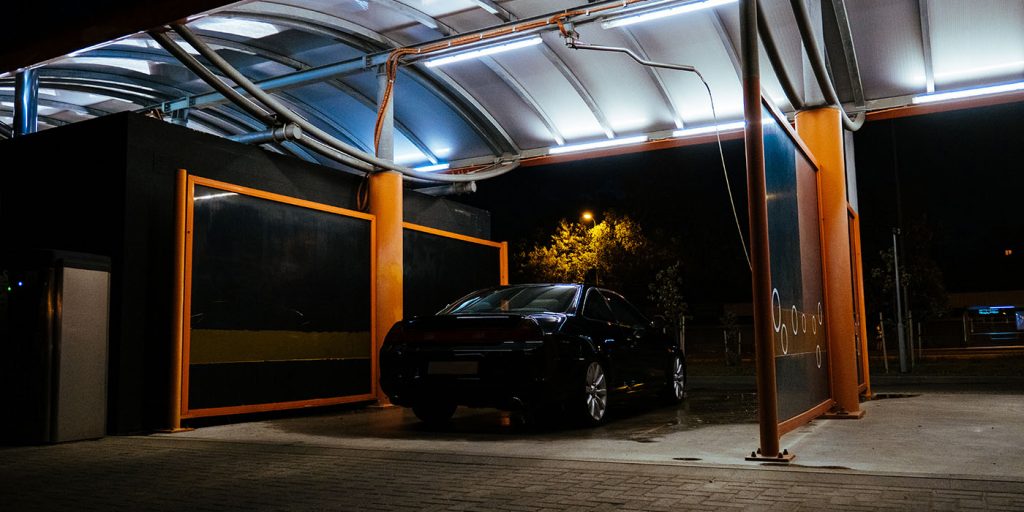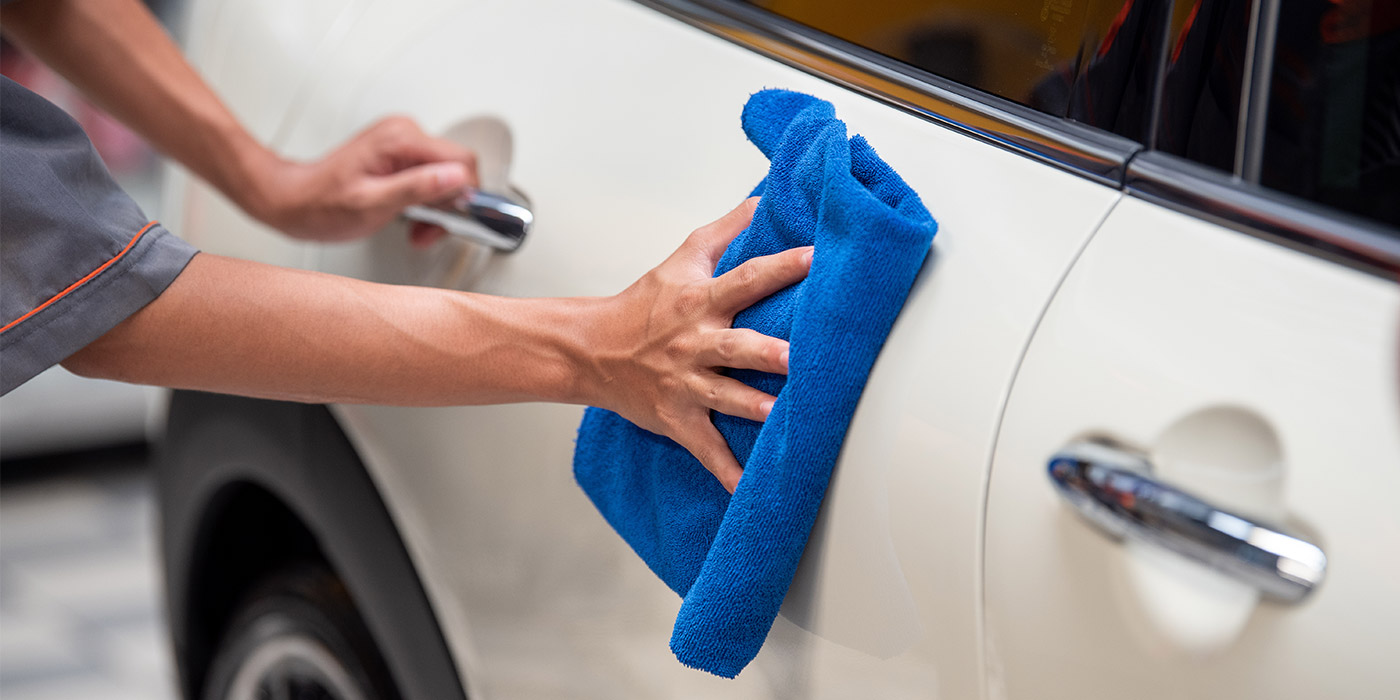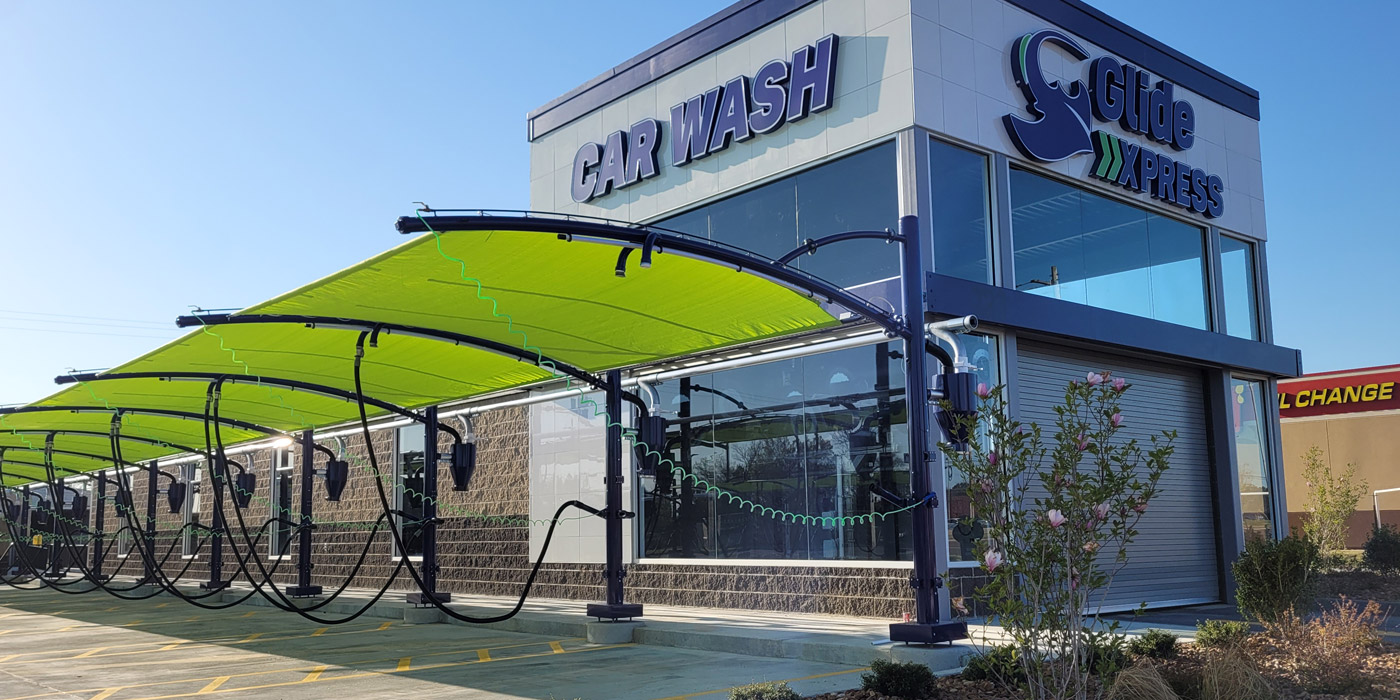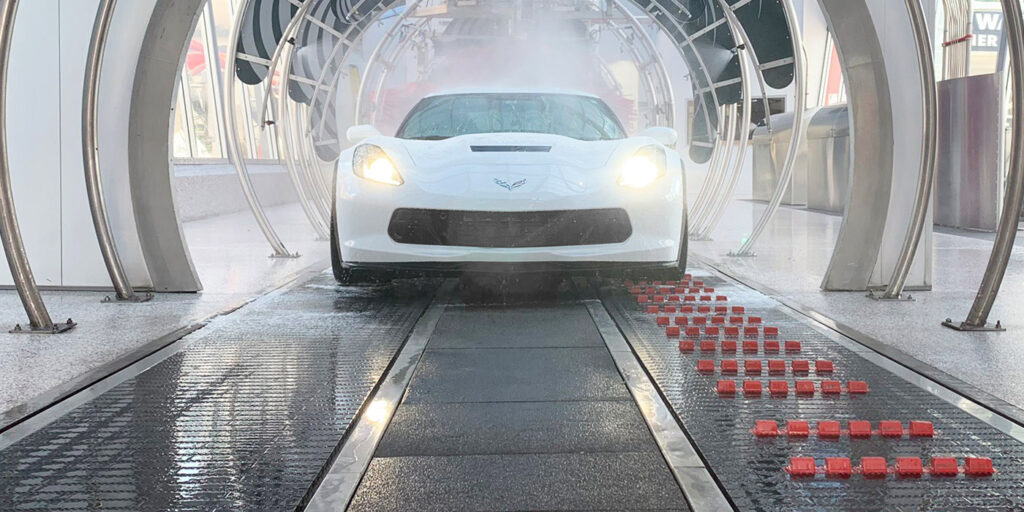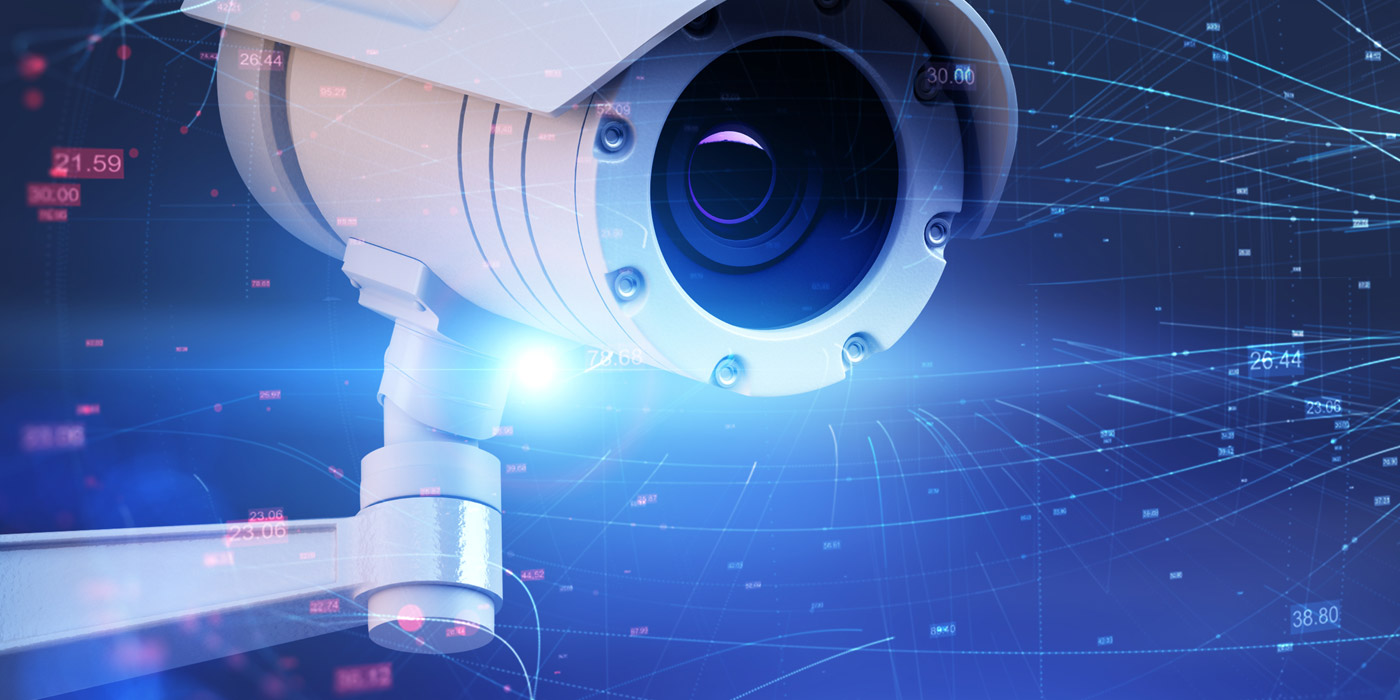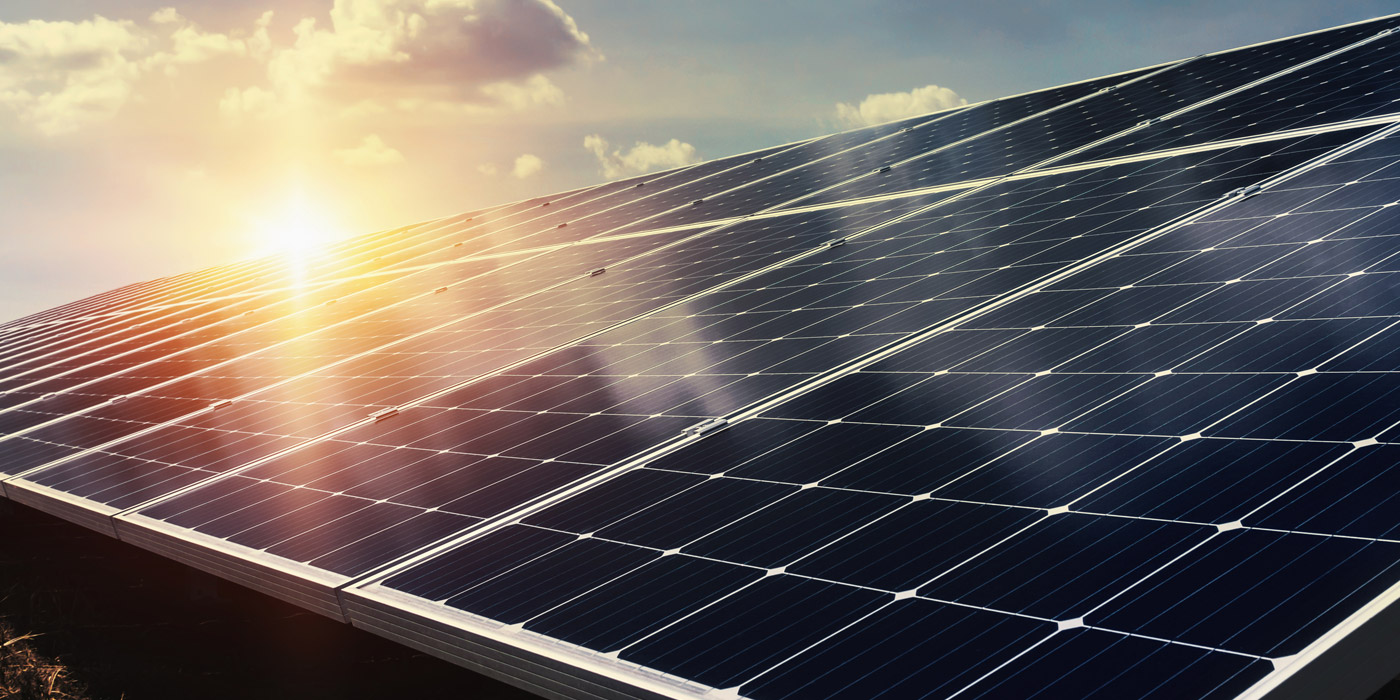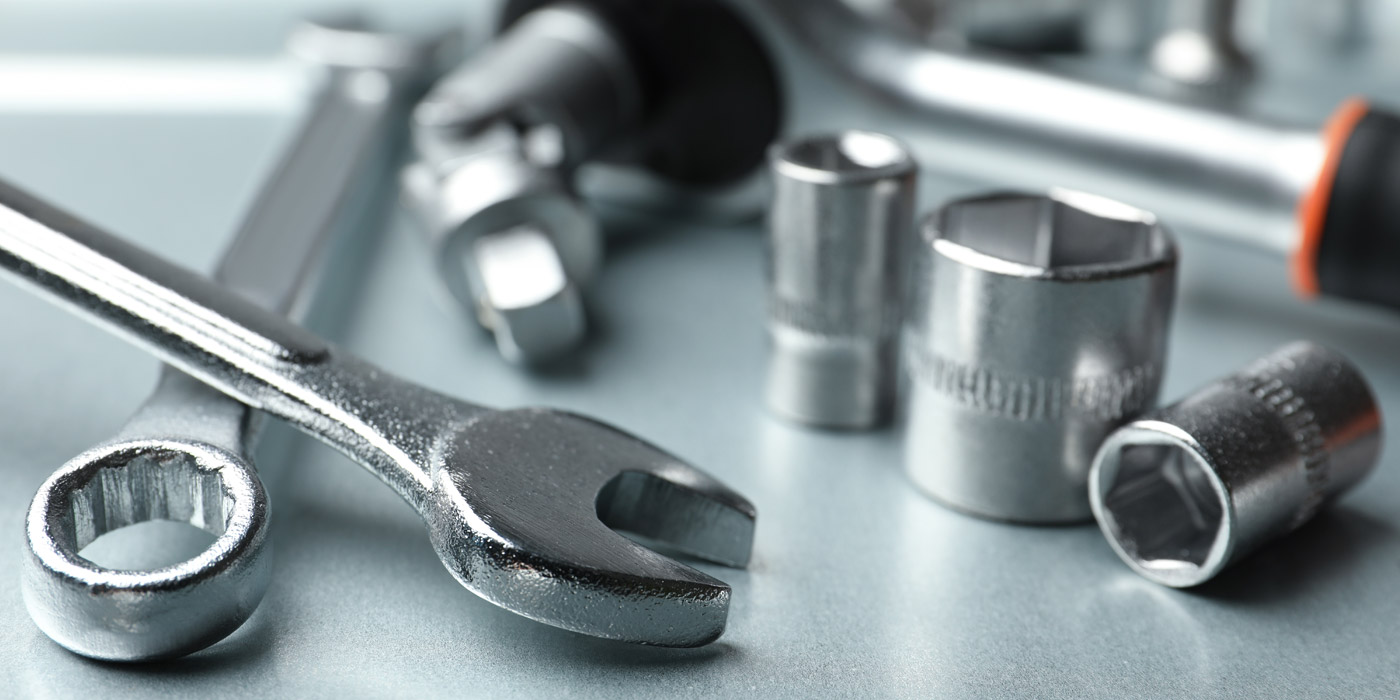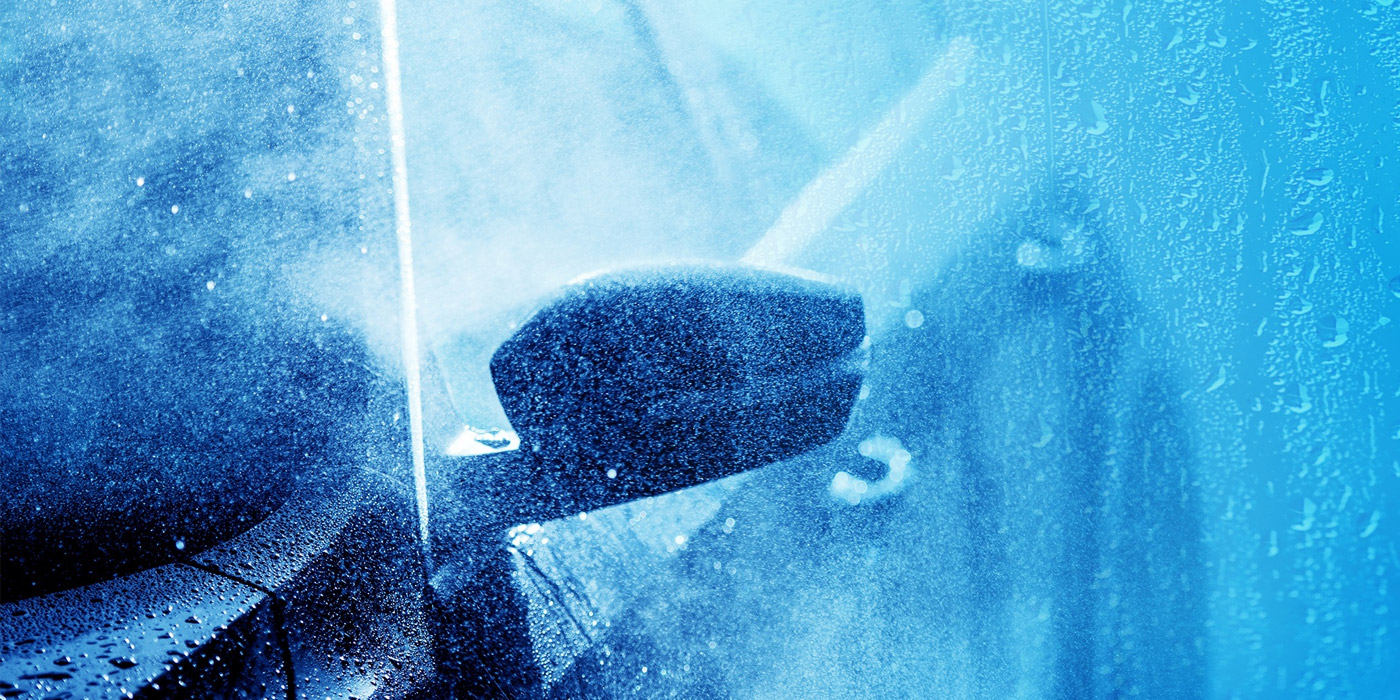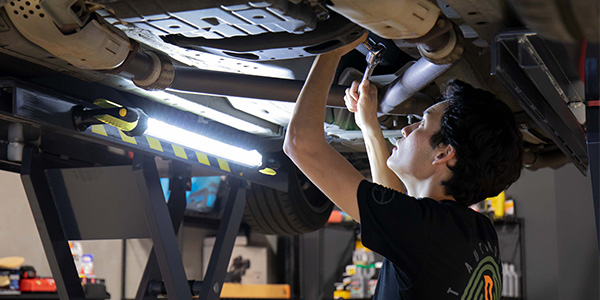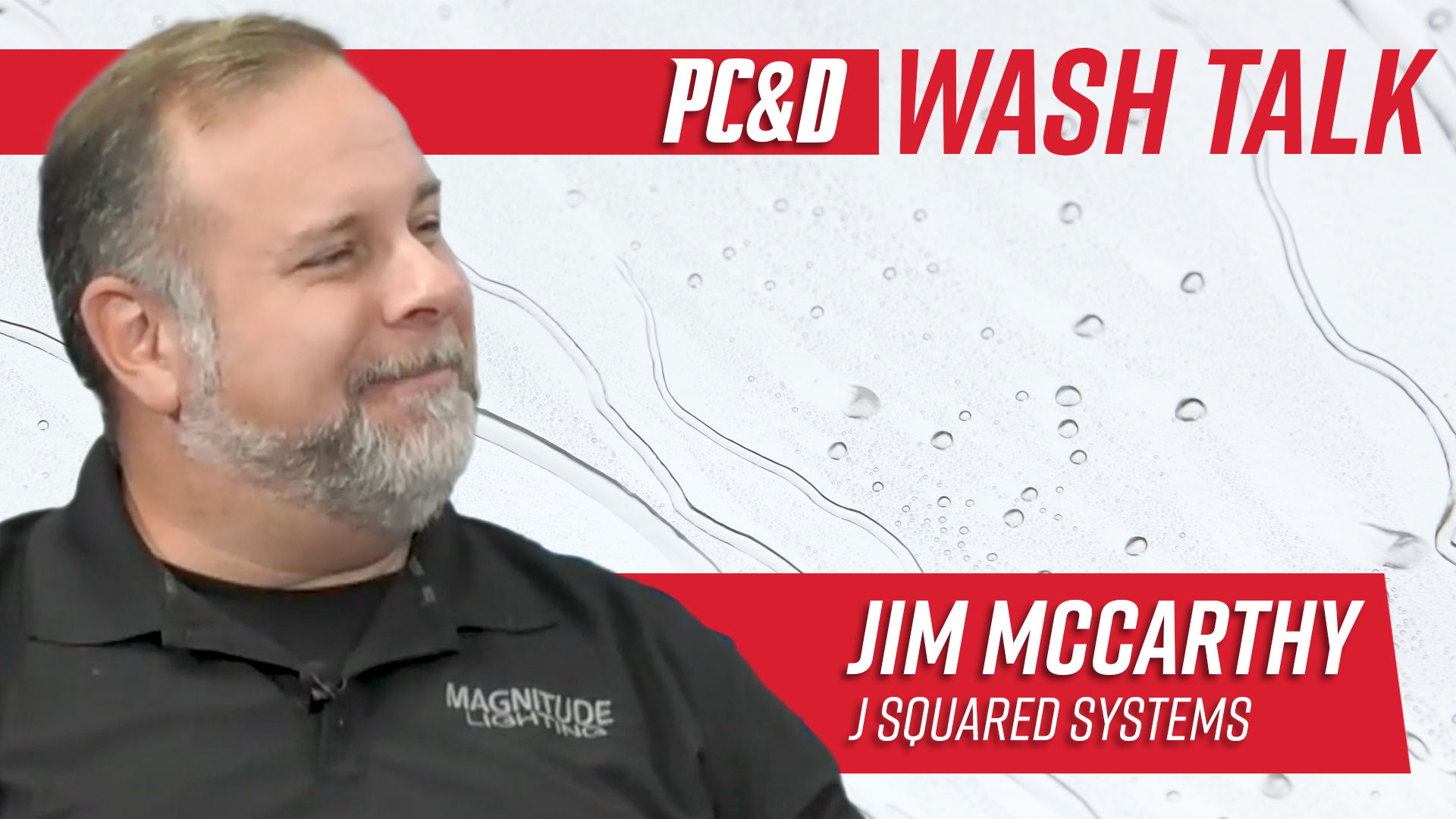Over the past decade, installing LED lighting in all areas of a carwash has become an industry best practice. The latest generation of fixtures offers many distinct benefits to self-serve, in-bay automatic and conveyor carwashes. The energy savings and durability of the fixtures compared to traditional options remains significant.
No time to read this article? Listen instead!
The quality of light generated is another positive factor for carwash owners. Utilized correctly, a bright white or colored light will emanate from all upgraded LED fixtures. These lighting updates will make any location more attractive to passing motorists. This clean lighting can also be used to highlight signage, showcase added wash features and guarantee site safety for customers and employees alike.
As the technology of LED fixtures has continued to evolve, the number of uses for the versatile lighting option have increased in busy washes. Light shows and colored arches highlight popular services and provide an element of entertainment during a wash cycle. Savvy operators have learned how to take advantage of this product category, and best-in-class washes will always work to utilize new LED features moving forward.
Turning to technology
As carwash operators deal with the realities of market saturation, many are seeking out noticeable differentiators, according to Bobby Jones, general manager with TSS Inc. Today, a custom LED light show inside and outside of a facility can provide a unique experience that will drive customers to form a connection to a wash brand. Consumers will often pay more for this LED-driven level of experience, and in turn many will share the service on social media.
In fact, carwashes can take advantage of these options for seasonal color shows to add value for visiting customers, Jones notes. Christmas, for example, is a great opportunity to utilize seasonal colors. The holiday season can be a good time to increase overall wash volume with a themed light show.
LED lighting is now essential in the tunnel, as it is the brightest source of light that can cut through the soap and foam, Jones continues. With the addition of LED fixtures in a carwash, a once-forgotten soap display can become a memorable occurrence for a customer. The color spectrums an LED light can achieve create an exciting show while the vehicle moves through the wash.
Erin Noonan, director of marketing with G&G Industrial Lighting, states that operators now know color effects are the biggest trend in carwash lighting. But, some owners may not know that many different options are available to washes. Selections include single-color arch lights, immersive kits, remote-controlled options, full-spectrum arch attachments and full-tunnel programmable light shows. These solutions allow owners to be flexible in choosing what effects are added to a wash or bay.
Looking to the future, Noonan reveals that LED integration will likely be simplified as manufacturers aim to make things as easy and seamless as possible. Expect wireless controls, more color control infused into carwash equipment and LED fixtures that can bend and take the shape of custom applications.
Another LED benefit Jones points out comes in the form of a higher level of safety on a wash site. LED lights greatly increase security camera visibility. This can help make a site more secure and safe for customers and employees alike.
“LED fixtures are better for a carwash environment, because they produce a cleaner quality of light,” says Kirby Corkill with Jarvis Lighting. “This helps customers feel like their cars are getting the best wash possible.”
Leading options
LED technology is positively changing the carwash environment in many ways. A car care business can have any area’s lighting upgraded to a much brighter and more cost-efficient unit, Jones states. Further, a wash can have exterior lights that provide a deeper sense of security. Still, the largest impact can be the experiences created by the LED light shows inside the tunnel.
Jones reminds carwash operators that LED lights are not a “one-size-fits-all” solution. Municipality recommendations, electrical requirements, street visibility and needed installation space are all factors owners should consider. When selecting new lighting technology, a consultant or carwash specialist should be contacted to assist in creating a proper fit.
Now, the best option for carwash locations has become LED lighting. Corkill explains that every light fixture installed in a wash today should be LED, including both indoor and outdoor lighting options. In the tunnel, typical products include LED ceiling mount and wall mount lights. Inside the building, everything from track lighting to 2-by-4 troffer lighting fixtures can be upgraded to LED. Exterior lighting should include pole-mounted LED fixtures as well as designated flood lighting.
LED fixtures are substantially more efficient than traditional lighting fixtures in that the energy required to operate them is drastically reduced, Noonan notes. Conventional fluorescent and high-intensity discharge lamps require anywhere from 100 to 250 watts to power one fixture, whereas an LED fixture requires only a fraction of that. LED lights generate a substantially higher-quality light output, and in most cases, energy usage is cut by 60% to 70%.
Additionally, LEDs typically have a life expectancy of more than 75,000 hours. On average, this is three times greater than that of a traditional light source, which means less maintenance and lower costs for replacement parts.
Noonan reminds operators that LED fixtures are only a better fit for a carwash if the technology is designed specifically for that application. Remember, not all LED technology is created equal.
“Since they are technically electronics — and everyone knows that electronics and water do not mix — it is imperative that you choose an LED fixture that is suited to withstand the direct spray, constant moisture and harsh chemicals and soaps found in a carwash,” Noonan continues. “Some LED fixtures are engineered with special materials and design components that ensure durability against these elements, whereas most would fail.”
Upgrades and maintenance
When maintaining a carwash’s overall lighting system, the first step is to replace any technology that is not working with LED options, Corkill suggests. If a light fixture is broken, fixing the existing devices might cost the same as upgrading to new LED technology. Many operators have found that it makes sense to upgrade lighting even if it is only done one fixture at a time. When performing a bigger upgrade project, savvy operators will focus on areas that operate for the most hours per day. If one light fixture runs 24 hours per day and another is only used an hour a day, it makes more sense to upgrade the lights that are on constantly.
Maintenance has proven to be a big difference once a switch is made to the updated technology. “LED fixtures are basically maintenance-free,” Corkill says. “The only maintenance required is occasional cleaning. This is a huge improvement over traditional fixtures that require re-lamping or re-ballasting every few years.”
One of the best parts of having an LED fixture specially designed for a carwash application is that an operator can set it and forget it, Noonan states. If the correct fixture is selected, virtually no maintenance is needed.
Corkill often sees carwash locations with outdoor lights that are on continuously, even on sunny days. While it is still better to operate an LED fixture 24 hours per day than a traditional fixture, maximum energy savings can be achieved only by operating the lights when they are necessary.
One important maintenance practice is changing lights at least quarterly with some fixtures, Jones notes. RGBW format LED lights have a lot of flexibility and should be leveraged by a wash operator, but this option should not be left unchecked.
Installation advantages
The first thing an owner should do when deciding to transition to LED lighting is reach out to his or her carwash distributor and explore what lighting options are available, Noonan states. Typically, the products offered by these distributors have been vetted and deemed worthy of being used in a carwash environment.
From there, a distributor can help an operator determine exactly what type of product is needed, based on the lighting levels. This is decided by factors affecting the specific install and the dimensions of the wash. Once it is known exactly what type of product is needed, it is time to research and ensure the quality of the selected product.
The result of upgrading carwash light fixtures can ultimately be described in one word: savings. Not only will a wash save money on energy costs due to the high efficiency of LED over traditional light fixtures, but a business will also save on labor and maintenance costs due to the simplicity of installation and elimination of replacing spent lamps, Noonan reiterates. The LED fixtures designed specifically for carwashes provide the convenience of protection against elements such as water, high humidity and harsh chemicals. Many traditional fixtures may constantly fail due to such exposure.
The benefits continue outside the tunnel or bay. “When wash operators upgrade exterior metal halide lights to LED, they will gain many benefits,” Jones says. “The obvious efficiency and cost savings are well recognized.”
The main efficiency of an LED light fixture is built into the LED chip itself, Corkill notes. With traditional lighting, a huge portion of the electricity used becomes heat. With LED chips, the amount of heat generated is substantially less and, therefore, the electricity consumption is lower.
Corkill concludes that the benefits of LED lighting have improved over time. A decade ago, LED technology was expensive and limited, but 10 years of progress have resulted in lights that are superior to traditional lighting in every way.
Sam Albertson is a freelance contributor.

